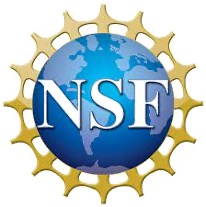University of Scranton NSF Noyce Scholarship Program
A scholarship opportunity for STEM majors pursuing a career in teaching
The University of Scranton NSF Noyce Scholarship Program is a Robert Noyce Teacher Scholarship Program that seeks to increase the number of highly-qualified STEM teachers in high-needs school districts. At the University of Scranton, scholarships may be awarded to eligible students that pursue a STEM degree and qualify for secondary-education teacher certification through either a Secondary Education BS or an 11-month Secondary Education MS.
Scholarship recipients are required to complete two years of teaching STEM in a high-needs school district for each year of support received. The teaching commitment must be completed within eight years after graduation (undergraduates) or within four years after completing the certification program (post-baccalaureates).
Benefits
- For undergraduate students, scholarship of $17,143 per year for 2 years
- For graduate students, maximum of $35,141 per scholar for 11 months
- Travel to Noyce Summit meeting (Washington D.C.)
- Innovative mentorship support for student teaching
- Common coursework
- Support for Praxis tests and more!
Eligibility
- U.S. Citizen or permanent resident
- Enrolled at the University of Scranton full time
- Undergraduate students with a double major in a STEM field and Secondary Education B.S.
- Post-Baccalaureate candidates who have a degree in Biology, Chemistry, Biochemistry, Mathematics, Physics; or subject to review by the Education Department: BCMB, Neuroscience, Forensic Chemistry, etc.
How to apply
A Noyce Scholarship application consists of :
- Personal information form and documentation of citizenship status
- Transcript
- One letter of recommendation from a STEM teacher
- 300 to 500-word essay on motivation, career goals, and interest.
Essay should address:
- Personal goals you hope to accomplish by becoming a Noyce Teacher Scholar
- Any previous experiences you have had with K-12 students
- What interests you about teaching in a high-need school district?
- How will you contribute positively to this type of educational environment?
For more information contact: Dr. Juan Serna (juan.serna@scranton.edu)

NSF Noyce Award #2223970
Disclaimer: Any opinions, findings, and conclusions, or recommendations expressed in this material are those of the author(s) and do not necessarily reflect the views of the National Science Foundation.





